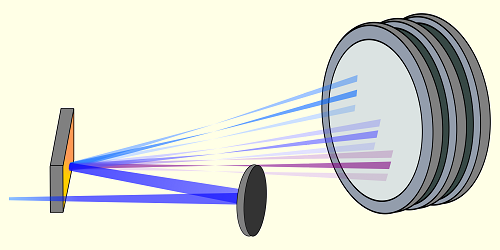Photonic Picture of High Harmonics
Scientists use high-frequency pulses of light to examine nuclear and electron dynamics with attosecond time resolution. They typically create these pulses from low-frequency ones using a method known as high-harmonic generation (HHG). But a consistent description of this technique that reconciles field-based and photon-based interpretations has been lacking. Such a framework has now been developed by Mekha Vimal and her colleagues at the University of Paris-Saclay [1]. The team’s results could facilitate applications in the burgeoning research area of strong-field quantum optics.
Typically in HHG, a single laser beam interacts with a medium to produce high harmonics—light at frequencies that are integer multiples of the input beam’s frequency. Vimal and colleagues instead realized HHG using a previously developed technique in which two laser beams are crossed at an angle in a medium. This setup causes the high harmonics to separate into multiple beamlets, each with different properties that depend on those of the input beams. By varying the intensities and structures of the two beams, the team studied the photon pathways that played the main role in the HHG process.
The researchers found that each beamlet resulted from the combination of several photon pathways that interfered with one other. These pathways involved not only the photons needed to create a given high harmonic but also extra photon pairs associated with emission and absorption processes involving atoms in the medium. Vimal and colleagues used these observations to establish a photonic picture of HHG that is in excellent agreement both with experimental data and with numerical simulations based on a simplified model of the process.
–Ryan Wilkinson
Ryan Wilkinson is a Corresponding Editor for Physics Magazine based in Durham, UK.
References
- M. Vimal et al., “Photon pathways and the nonperturbative scaling law of high harmonic generation,” Phys. Rev. Lett. 131, 203402 (2023).




